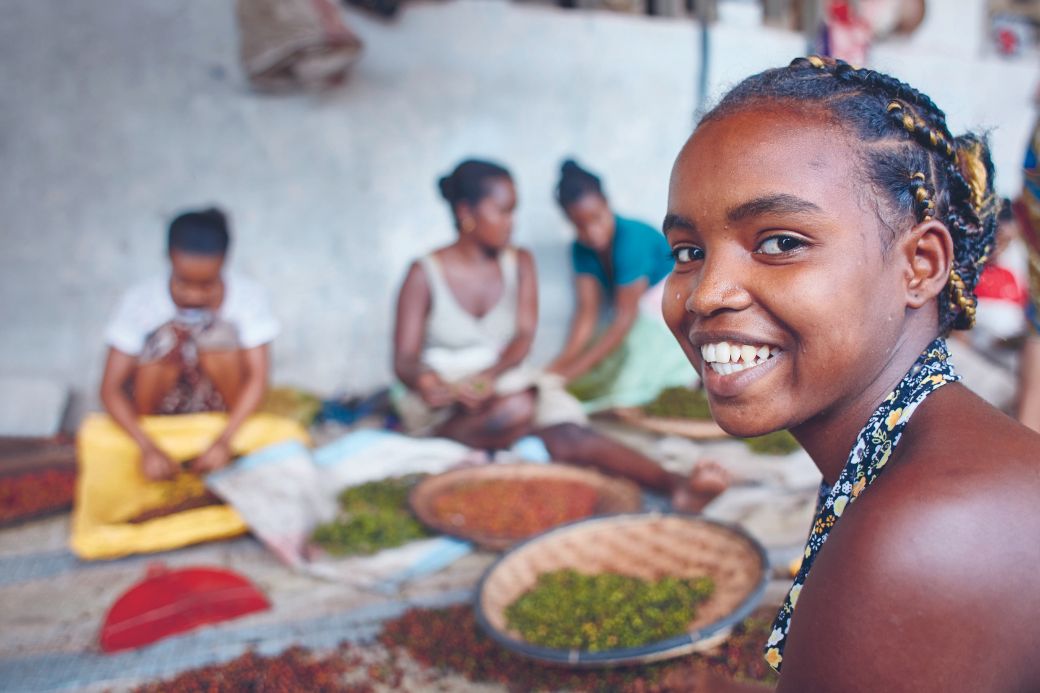‘The world will face more and more catastrophes and disaster response is the key to food security’.
750 million people in the world suffer from hunger: progress to fight it has stalled since 2015 and in 2023 the situation is looking grim, with hunger at severe or alarming levels in 43 countries and the number of malnourished people rising to 735 million. As the impact of climate disasters, wars, economic crises and pandemics add up, the consequences fall most heavily on the youngest people, whose future perspectives are threatened: today’s food instability means risking an adult life of extreme poverty, going hungry, living in contexts unable to cope with climate disasters and the intertwining of other crises.
The picture emerges from the Global Hunger Index (GHI), one of the main international reports on the measurement of hunger in the world, curated by CESVI for the Italian edition and compiled annually by Welthungerhilfe and Concern Wordlwide, of the Alliance2015 European network.
CESVI presented the 18th edition of the Global Hunger Index – thanks to the contribution of PricewaterhouseCoopers – at Palazzo Marino, seat of the Municipality of Milan. Guests of the event: Lamberto Bertolè, Councillor for Welfare and Health of the Municipality of Milan; Maurizio Martina, FAO Deputy Director; Fabio Massimo Castaldo, MEP (AFET, SEDE, ECON Committees); Stefano Gatti, Special Envoy for Food Security of the Italian Ministry of Foreign Affairs and International Cooperation; Gloria Zavatta, President of CESVI Foundation; Valeria Emmi, Networking & Advocacy Senior Specialist, CESVI Foundation; Bianca Arrighini, CEO Factanza; Andrea Grieco, European Climate Pact Ambassador; Daniele Guadagnolo, Co-Founder and Head of Climate Diplomacy at Change For Planet.
The analysis, which calculates each country’s GHI score based on the study of four indicators (undernutrition, child wasting, child stunting and under-five mortality) was presented on the eve of the opening of Cop28 in Dubai.
Climate change directly and significantly impacts food insecurity: as temperatures and climate disasters increase, so does the difficulty and uncertainty of producing food. The effects are particularly evident in poor countries and on the health of their people: 75% of those living in poverty in rural areas rely on natural resources such as forests and oceans for survival, thus being particularly vulnerable to disasters; in addition, the World Food Programme estimates, 80% of the planet’s hungry people live in areas particularly affected by natural disasters. According to the World Bank, from 2019 to 2022, the number of people living in food insecurity increased from 135 million to 345 million, under the combined effect of various crises and emergencies.
The GHI 2023 score for the world is 18.3, considered moderate, less than one point down from 2015 (19.1), and since 2017 the number of undernourished people has increased from 572 million to about 735 million. The regions with the worst data are South Asia and Africa South of the Sahara (27.0 for both, i.e. severe hunger): they have consistently recorded the highest levels of hunger over the past two decades. In 2023 hunger is alarming in 9 countries: Burundi, Lesotho, Madagascar, Niger, Central African Republic, Democratic Republic of Congo, Somalia, South Sudan and Yemen. In 34 other countries, it is severe. In 18 countries hunger has increased since 2015 (moderate, severe or alarming situations) and in 14 others the decline has been negligible (less than 5%). At the current rate, 58 countries will not reach a low level of hunger by 2030.
Among the world’s young people, one in five is neither working, nor engaged in education or training. At the same time, the COVID-19 pandemic has caused the loss of millions of jobs, particularly affecting young people: even when working they are twice as likely as adults to live in extreme poverty, on less than $1.90 a day, and much more likely to be informally employed. This picture is even gloomier for girls, on whom unpaid care work continues to fall. Climate change, with the disasters it causes, is key: by mid-century, in the worst-case scenario, it could push up to 158.3 million more women and girls into poverty, while food insecurity will affect at least 236 million more women and girls (compared to 131 million of their male counterparts).
The focus of the report this year is on how current food systems have undermined girls and boys, who will inherit systems that are unsustainable, inequitable, non-inclusive and increasingly exposed to the consequences of climate change. The under-25 demographic group is important and growing, particularly in countries with food insecurity problems: it constitutes 16% of the globe’s population (1.2 billion people), never so large in history, and largely lives in low- and middle-income countries in South Asia, East Asia and Africa.
